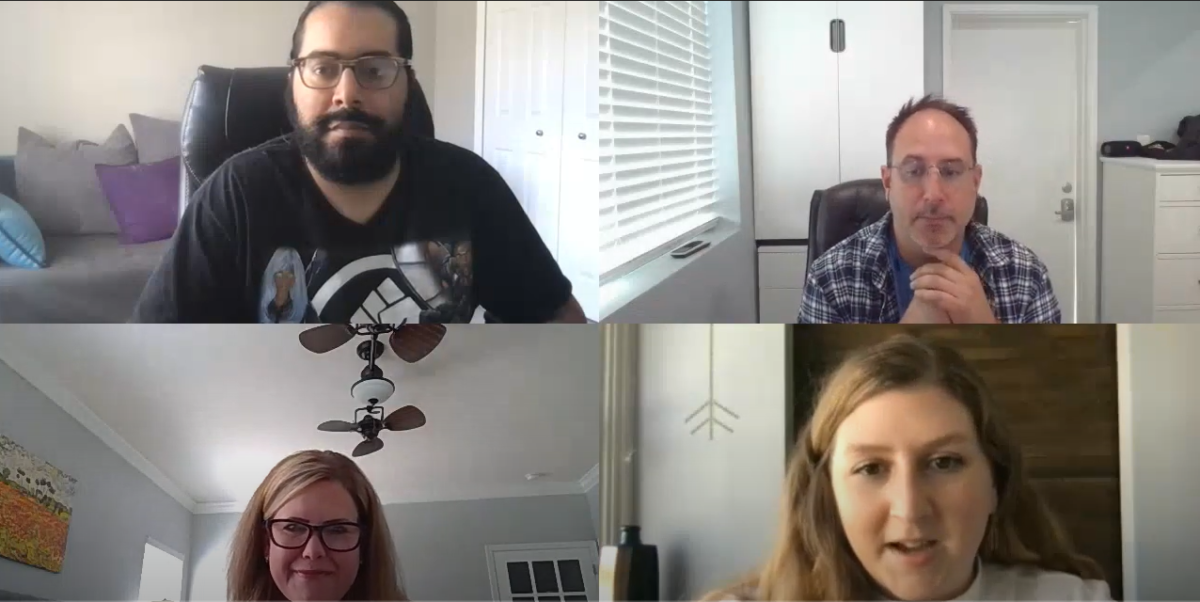For Included’s Raafi Alidina, the problem many organizational leaders struggle with in establishing culture is not what it means for their own company, but what it means at all.
“One of the things that I think is often difficult is not just ‘What is in our culture?’ but what do you mean by the word ‘culture’?” Alidina said.
He found his answer during the testimony of former Barclay’s CEO Bob Diamond, who said that culture is how people behave when no one is watching. Alidina spoke on the topic during last week’s Philly Tech Week presented by Comcast’s Introduced by Technical.ly conference. Alongside Truvelop CEO and cofounder Lisa First-Willis and Stephan Aarstol, author of “The Five Hour Workday,” Alidina discussed strategies in finding company culture, and how to maintain it even as companies grow.
“Culture is built on the behaviors of the people in the organization, and it’s kind of a cycle,” Alidina said. “The behaviors define the culture and then the culture that is built by those behaviors reinforces those behaviors.”
Culture is a living, breathing thing.
Unless you’ve missed the two-people-in-a-garage-to-unicorn-status lore, we all know businesses change over time. What started as a three-person startup team can grow to hundreds of employees, and that sometimes means that the company culture you started out with isn’t possible to maintain anymore.
“Your culture is a living, breathing thing. So as you hire more people your culture is going to shift, it’s going to adapt, and if it’s not then you’ve got a problem,” First-Willis said. “There [can be] a real disconnect because those behaviors, those core values, your vision, your mission, all those things tie directly into culture.”
And it doesn’t just stop at how employees are feeling. “Shark Tank” entrepreneur Aarstol said that the actual success of his company changed when it brought on someone more focused on HR and the day-to-day lives of employees.
“We started to really take off when we brought someone in that was really interested in people and culture,” Aarstol said.

That means checking-in, over and over again.
To really gauge how employees feel about culture, First-Willis recommends leaders ask employees directly, if you have the bandwidth, either through HR or one-on-one meetings. For larger organizations, that can mean sending surveys a few times a year to check in on things. Questions can include whether or not employees feel like they can take risks and whether or not the company is accountable in times of conflict.
If you don’t, Alidina said, you won’t be able to see what behaviors are driving certain outcomes and how you can best make cultural change.
“You need to ask people repeatedly so that you can make sure you’re creating the culture that you want,” Alidina said.
Your behaviors need to match up with what you say.
For First-Willis, company culture starts on day one, but it becomes critical when you begin (and continue on) hiring employees. Perspective candidates throughout a company’s life may very well make the decision on what position to take based on company culture.
“Being able to describe our company and what we do, what we’re passionate about and what we believe in, is really important,” First-Willis said. “Because when you’re going through the hiring process, you’re going to pick the company that you’re inspired by and that culture, that company is a place where you feel like you’ll fit.”
In order to communicate that culture when candidate-courting, First-Willis said it needs to be clearly defined. She recommended coming up with a standard message campaign that can be distributed and repeated, but added that it needs to be backed with real examples and reinforced behaviors. That means making sure current employees are in the know and have a clear idea on what the culture is.
When you’re done checking in with employees, ask yourself some questions.
Ultimately, it is up to the company creators and higher-ups to find and maintain that company culture. Alidina offered some questions to ask when self-reflecting:
- How much of your values are actually embedded in your business strategy?
- Are you capturing data around these topics?
- Think about your own governance. Who is responsible and accountable for what happens?
- How are you thinking about what leadership behaviors should be and how are you making sure they happen?
- Don’t dupe the newbs. How are you ensuring the behaviors you identified are in line with whatever policies you have around hiring?
Watch the whole conversation below:







